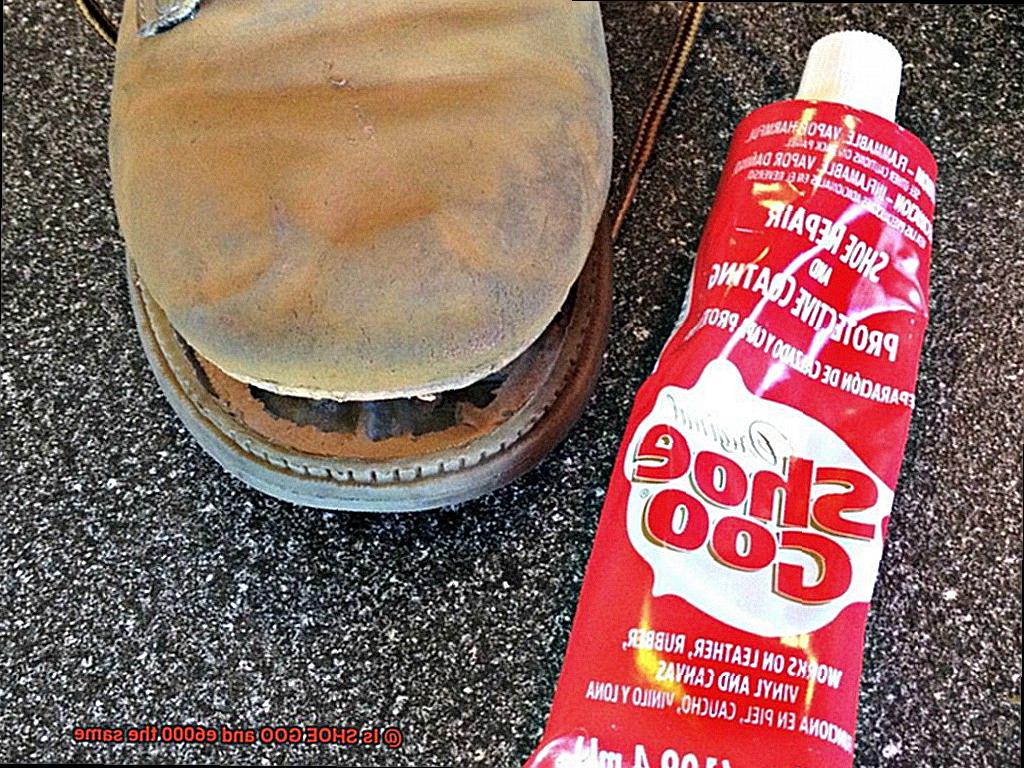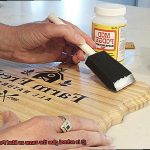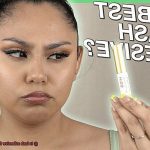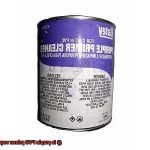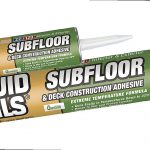When it comes to rescuing our beloved shoes from the brink of oblivion, we need an adhesive that can withstand our relentless adventures. Enter SHOE GOO and e6000, two adhesive powerhouses that have captured the hearts of shoe enthusiasts everywhere. But are they truly cut from the same cloth?
In this in-depth comparison, we’ll dive headfirst into the unique qualities and characteristics of SHOE GOO and e6000. By examining their compositions, application techniques, and durability, we’ll help you determine which adhesive reigns supreme for your specific needs.
SHOE GOO is a name that echoes through sneaker circles like a battle cry. Crafted specifically for shoe repairs, this versatile adhesive offers a bond so strong it could probably hold together a tornado. It’s perfect for reattaching soles, fixing worn-out heels, or reinforcing any weak spots on your favorite kicks. With its rubberized formula, it grips onto materials like leather and fabric with an ironclad grip that laughs in the face of wear and tear.
On the flip side, e6000 is like the Swiss Army knife of adhesives – it’s got your back no matter what you’re creating. From leather to metal to plastic to fabric (and everything in between), e6000 bonds with such tenacity that even Superman would be impressed. Sure, it’s great for shoes too, but its talents extend far beyond footwear repairs. Jewelry making? Home improvements? Creative projects? You name it; e6000 has got you covered.
While these two adhesives may seem similar at first glance, understanding their differences is key when choosing your adhesive sidekick. SHOE GOO stands tall against water and extreme temperatures with unwavering resilience – perfect for those who love exploring the great outdoors. It gets sticky within minutes, and after a mere 24 hours, it forms an unbreakable bond that can handle anything Mother Nature throws its way.
On the other hand, e6000 takes a bit more time to reach its full bonding strength. Patience is a virtue here, with a curing time of around 72 hours. But fear not; once it’s fully cured, this adhesive creates an unwavering hold that stays flexible – ensuring your shoe repairs, jewelry masterpieces, or crafty creations remain intact for years to come.
What is SHOE GOO?
Contents
Fear not. There’s a magical adhesive on the market that can work wonders – SHOE GOO. In this article, we’ll delve into the world of SHOE GOO, discovering its purpose, versatility, and why it’s a must-have for anyone who cherishes their shoes or enjoys repairing things.
What is SHOE GOO?
SHOE GOO is a powerful adhesive specifically designed to repair and protect shoes. It’s tailor-made to bond a variety of materials commonly found in footwear, including rubber, leather, fabric, and vinyl. This versatile adhesive is a savior for fixing sole separations, holes, cracks, and other shoe-related issues.
Easy Application:
Applying SHOE GOO is a breeze. Its user-friendly tube comes with an applicator tip that ensures precise application. Simply squeeze the desired amount of glue onto the area that needs repair. For an even spread, use a brush or spatula to distribute the adhesive. Once dry, SHOE GOO forms a clear and flexible seal that provides long-lasting protection and reinforcement.
Versatility Beyond Shoes:
While SHOE GOO is primarily designed for shoe repairs, its potential extends far beyond footwear. Users have discovered its usefulness in fixing items like bags, belts, and even household items such as furniture and appliances. With its strong and flexible bond, SHOE GOO becomes an indispensable adhesive for various repair projects.
Durable and Reliable:
One of SHOE GOO’s standout features is its durability. It forms a robust bond that can withstand water, heat, and cold temperatures. Say goodbye to concerns about your repaired shoes falling apart during outdoor activities or extreme weather conditions.
What is e6000?
Look no further than e6000, the adhesive superhero that will revolutionize your crafting game. With its exceptional strength, versatility, and durability, e6000 is the go-to glue for all your artistic endeavors.
Versatility:
e6000 is a true master when it comes to bonding materials. Wood, metal, glass, fabric, plastic – you name it, e6000 can bond it. No more wasting time and money on different glues for different projects. With e6000 in your toolkit, you have the power to create with any material you desire.
Precision Application:
Crafting requires attention to detail, and e6000 understands that. Its thick consistency allows for precise application without any messy dripping or running. Whether you’re delicately attaching gemstones to jewelry or intricately piecing together a mixed-media masterpiece, e6000 gives you the control you need to bring your vision to life.
Durability:
Your creations deserve to withstand the test of time, and e6000 delivers on that promise. This adhesive is resistant to water, chemicals, and extreme temperatures, ensuring that your glued items stay intact no matter what challenges they face. From outdoor garden art to indoor home decor, e6000 has the strength to hold it all together.
Aesthetics:
Crafting isn’t just about functionality; it’s about creating something beautiful. That’s why e6000 dries clear, leaving behind no visible residue. No more unsightly glue marks ruining the appearance of your masterpiece. With e6000, your glue lines seamlessly blend in with the surrounding materials, ensuring a professional-looking finish every time.
Application Tips:
- Use e6000 in a well-ventilated area to minimize exposure to its initial strong odor.
- Allow the adhesive to fully cure for 24 to 72 hours, depending on the materials and conditions, for maximum strength and durability.
- Clean any excess glue immediately with a damp cloth before it dries.
Similarities Between SHOE GOO and e6000
Look no further than the dynamic duo of SHOE GOO and e6000. These adhesive powerhouses have gained a loyal following for their remarkable versatility, strength, and durability. Whether you’re repairing a cherished pair of shoes or creating a work of art, these glues have got you covered.
One of the primary similarities between SHOE GOO and e6000 lies in their ability to adhere to a wide range of materials. From leather to plastic, fabric to metal, these glues can tackle it all. No matter what project you have in mind, rest assured that SHOE GOO and e6000 will form a bond that will withstand the test of time.
Strength is another shared characteristic between SHOE GOO and e6000. Renowned for their powerful bonding properties, these glues create a durable and long-lasting seal once cured. You can trust that your repaired items will stay intact – these adhesives have got your back.
Both SHOE GOO and e6000 possess the advantage of being waterproof. Once cured, they form a watertight seal that can withstand exposure to moisture without compromising their adhesive properties. This makes them perfect for outdoor projects or applications that may come into contact with water.
Flexibility is yet another feature shared by SHOE GOO and e6000. These glues can withstand movements and vibrations without cracking or breaking the bond. This flexibility ensures that your projects stay intact, providing peace of mind.
Aesthetics are important, and both SHOE GOO and e6000 cater to this need. Once cured, they can be painted over seamlessly, blending in with the surrounding material. Say goodbye to unsightly glue marks – these glues will elevate the appearance of your projects.
The accessibility of these adhesive wonders is also worth noting. Both SHOE GOO and e6000 are readily available in most hardware stores or online retailers. They come in various sizes and packaging options to cater to your specific needs and project requirements.
Differences Between SHOE GOO and e6000
In the world of adhesives, two heavyweights have emerged as champions – SHOE GOO and e6000. These versatile glues have gained a loyal following among DIY enthusiasts for their incredible strength, durability, and flexibility. But how do they compare? Let’s dive into the world of glues and explore the differences between SHOE GOO and e6000.
Composition:
SHOE GOO is primarily composed of silicone, while e6000 is an industrial-strength adhesive that contains a unique blend of chemicals. This difference in composition affects their performance and suitability for different applications.
Strength and Flexibility:
SHOE GOO is specifically designed to withstand the rigors of footwear use, providing exceptional bonding capabilities and flexibility to endure constant bending and flexing. On the other hand, e6000 boasts extraordinary strength and durability, making it suitable for a wide range of applications beyond just shoe repair.
Drying Time:
If you’re in need of a quick fix, e6000 is the go-to adhesive as it generally dries faster than SHOE GOO. However, for projects that require precision or allow for longer drying times, SHOE GOO may be more suitable.
Application Method:
Due to its thicker consistency, SHOE GOO requires a more precise application. On the other hand, e6000’s thinner consistency allows for greater versatility in application, making it easier to spread and work with on various surfaces.
Odor:
While both adhesives have distinct smells, SHOE GOO has a stronger chemical odor compared to e6000. If you’re sensitive to smells or prefer working with less pungent adhesives, e6000 may be more appealing.
Waterproof Properties:
Both SHOE GOO and e6000 offer good resistance to water. However, SHOE GOO is specifically marketed as waterproof, making it an excellent choice for repairing shoes or other items that may come into contact with moisture.
Recommended Uses:
SHOE GOO is particularly well-suited for shoe repair and other flexible materials. Its strength and flexibility make it ideal for repairing soles, securing loose stitching, and reinforcing worn-out areas. On the other hand, e6000 is recommended for versatile bonding applications on various surfaces like metal, glass, fabric, and more. It excels in jewelry-making, craft projects, and general repairs.
Cost:
In terms of cost, SHOE GOO is generally considered more affordable and widely available compared to e6000, which may be slightly more expensive.
Safety Considerations:
Both glues contain chemicals that can be harmful if ingested or inhaled. It’s important to use them in well-ventilated areas and follow the safety instructions provided by the manufacturers.
Drying Time of SHOE GOO and e6000
In the world of adhesive champions, two heavyweights stand tall – SHOE GOO and e6000. These adhesive powerhouses captivate DIY enthusiasts with their incredible strength, durability, and flexibility. But when it comes to drying time, which glue takes the crown? Let’s step into the glue arena and uncover the differences between these contenders.
Drying Time Showdown:
SHOE GOO and e6000 have different contenders in the ring when it comes to drying time. Let’s take a closer look at their performance:
SHOE GOO:
- Known for its exceptional adhesive properties, SHOE GOO is a go-to for repairing and protecting shoes from wear and tear.
- However, patience is necessary as SHOE GOO has a relatively longer drying time compared to e6000. It typically requires 24 to 72 hours to fully cure, depending on application thickness and environmental conditions.
- Temperature, humidity, and materials being bonded all play a role in influencing the drying time of SHOE GOO.
- While higher temperatures and lower humidity can expedite the process, achieving optimal results demands patience.
e6000:
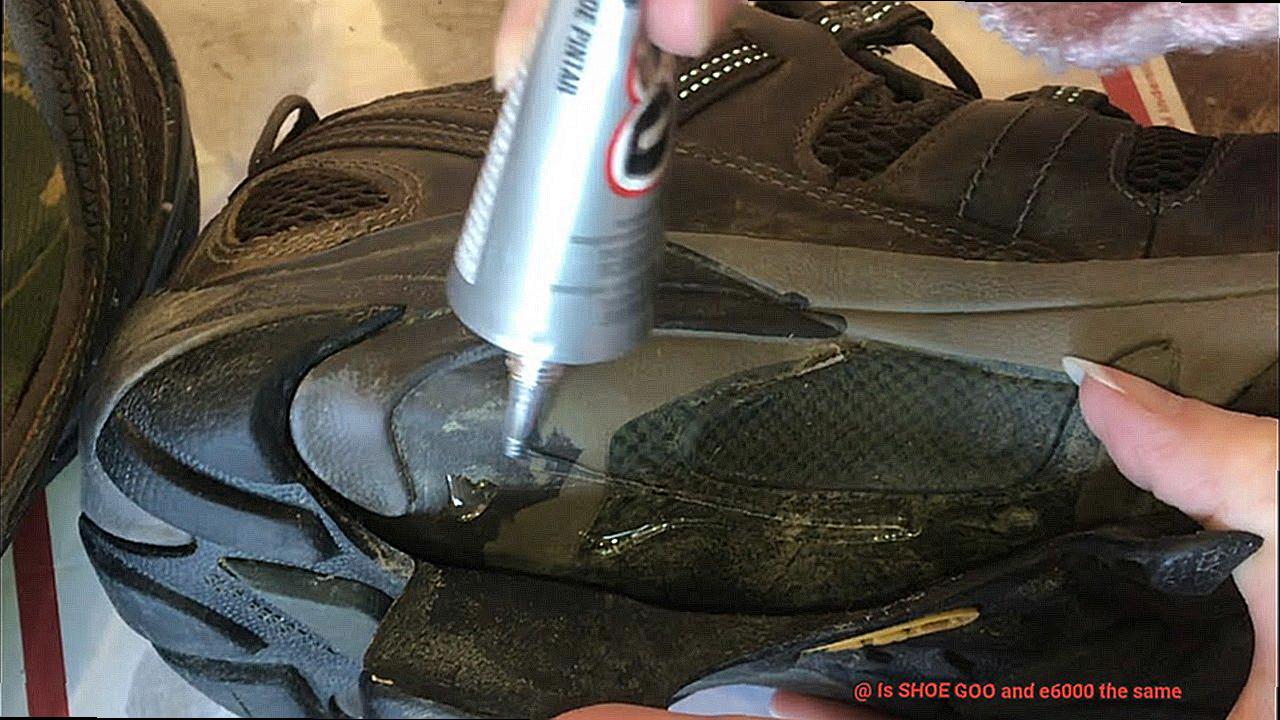
- e6000 is another formidable contender in the glue arena, praised for its versatility in crafting and general repairs.
- Unlike SHOE GOO, e6000 boasts a faster drying time. It usually becomes tacky within 20 to 30 minutes, allowing for handling.
- However, complete curing may take up to 24 hours or more, depending on environmental conditions and application thickness.
- Similar to SHOE GOO, temperature, humidity, and materials being bonded can impact e6000’s drying time.
Environmental Factors:
Both SHOE GOO and e6000 are influenced by environmental conditions during the curing process. Here are key factors to consider:
Temperature:
- Higher temperatures can accelerate the drying process for both glues, reducing their overall curing time.
- However, extreme heat may thin the glue, potentially affecting its adhesive strength.
- Striking a balance and following recommended temperature guidelines is essential.
Humidity:
- Lower humidity levels expedite drying time for both SHOE GOO and e6000.
- Conversely, high humidity prolongs curing as moisture in the air interferes with proper setting.
- Optimal results are achieved in environments with moderate humidity levels.
Odor of SHOE GOO and e6000
When it comes to adhesive powerhouses like SHOE GOO and e6000, we can’t ignore the elephant in the room – their distinct odors. These two popular adhesives may work wonders in fixing shoes and tackling DIY projects, but they come with scents that can make your nose twitch.
Let’s start with SHOE GOO. This adhesive has earned its reputation for being a go-to solution for shoe repairs. However, its odor can be described as nothing short of potent. Imagine a chemical-like scent that lingers in the air, sharp and pungent. It’s the kind of smell that grabs your attention, whether you like it or not. For those who are sensitive to strong odors, using SHOE GOO might require some extra caution.
Now let’s move on to e6000, the jack-of-all-trades adhesive used for crafts, jewelry making, and all sorts of DIY projects. Compared to SHOE GOO, e6000 offers a slightly milder aroma. Picture a rubber-like scent with subtle hints of solvent. While you’ll still notice the odor, it tends to be more tolerable than its shoe-repairing counterpart.
To minimize the impact of these adhesive odors, it’s important to work in a well-ventilated area. Cracking open windows or doors can invite fresh air to circulate and dilute the smells. If possible, consider taking your glue-related tasks outdoors or into spaces with good airflow.
Another way to protect yourself from inhaling these odors is by wearing a mask or respirator during application. These protective measures can filter out potentially harmful fumes and make breathing easier while working with the adhesives.
It’s also worth noting that both SHOE GOO and e6000 tend to lose their strong odors as they cure. As these adhesives dry and set, the smells should become less noticeable or even disappear completely. So, if you can bear with the initial pungency, you’ll be rewarded with a strong bond and a diminished scent.
Application of SHOE GOO and e6000
When it comes to powerful tools, glue might not be the first thing that comes to mind. But let me tell you, SHOE GOO and e6000 are no ordinary adhesives. These two products have revolutionized the world of repairs and crafting projects. In this post, we will explore the fascinating applications, easy application process, and incredible bonding strength of SHOE GOO and e6000. Get ready to discover the magic of glue.
SHOE GOO: Repairing and Protecting Footwear
SHOE GOO is a game-changer for anyone looking to fix worn-out soles, seal shoe seams, and prevent further damage to their beloved footwear. Its secret lies in its strong bond and unparalleled flexibility, making it the go-to adhesive for repairing flexible materials like shoes. To apply SHOE GOO, simply clean the surface, squeeze out the desired amount of glue onto the area, and spread it evenly using a small brush or the tip of the tube. Let it dry for 24 hours to experience its maximum bonding strength.
E6000: Versatility at its Finest
If you’re searching for a glue that can handle any task, look no further than e6000. This powerhouse adhesive can be used on a wide range of surfaces, including fabric, leather, metal, glass, and more. Whether you’re working on crafts, jewelry making, or general repairs, e6000 has got you covered. To apply this versatile adhesive, clean the surface and apply it directly from the tube onto the desired area. However, beware of its strong odor and make sure to work in a well-ventilated area. Allow 24 hours for it to dry completely and witness its optimal results.
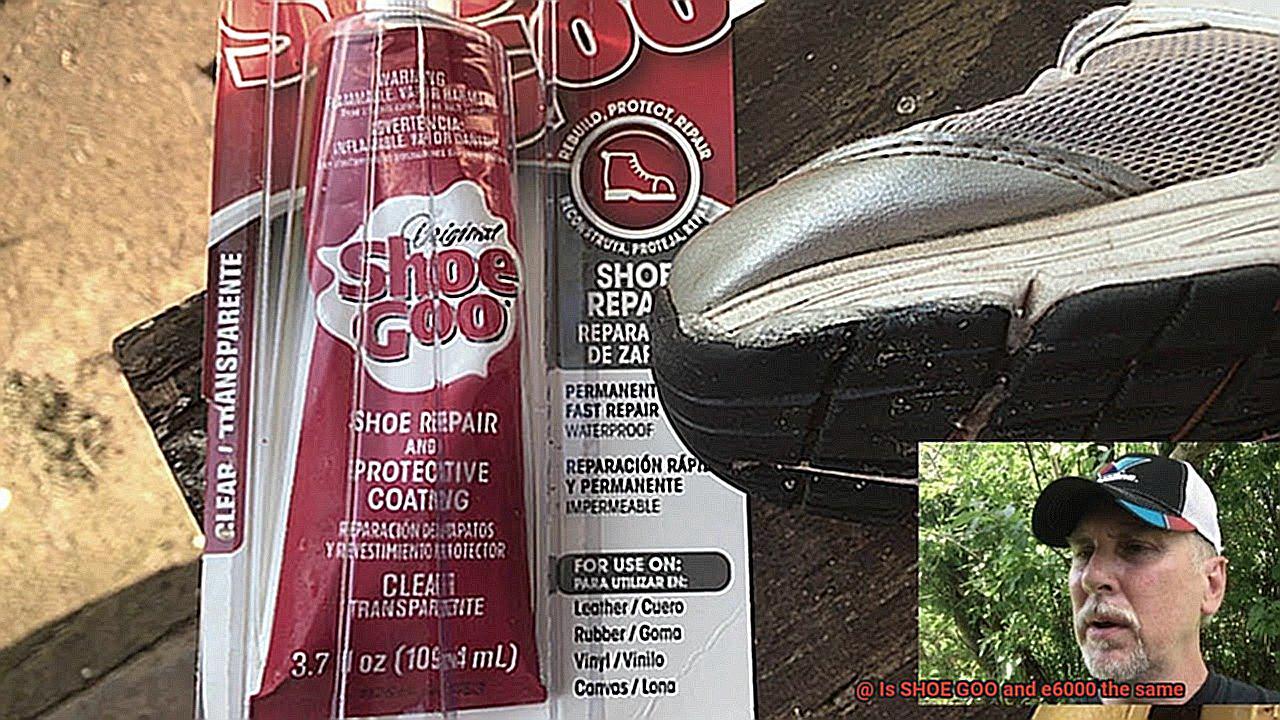
The Power of Bonding
Both SHOE GOO and e6000 offer a strong bond that stands the test of time. Once fully cured, these adhesives create an unbreakable connection. However, it’s important to note that SHOE GOO provides a higher level of flexibility compared to e6000, making it the perfect choice for shoe repairs and other flexible materials. Remember to follow the manufacturer’s instructions for proper application and safety precautions. Before applying these glues to larger surfaces, conduct a small compatibility test to ensure desired results.
Pros and Cons of Using SHOE GOO or e6000
When it comes to adhesive products, two names stand out: SHOE GOO and e6000. Both are popular choices for various projects, but they each have their own unique advantages and disadvantages. Let’s take a closer look at the pros and cons of using SHOE GOO and e6000.
SHOE GOO:
Pros:
- Flexible once dry, making it perfect for shoe repairs, such as fixing worn-out soles and repairing shoe seams.
- Forms a barrier against water and dirt, keeping repaired shoes looking good as new.
- Easy to use with a convenient tube and applicator tip.
- Dries relatively quickly, allowing for quick repairs.
Cons:
- Strong odor that may require proper ventilation during application.
- Not as versatile for other types of bonding projects.
e6000:
Pros:
- Multipurpose adhesive suitable for various surfaces including fabric, metal, glass, and plastic.
- Industrial-strength bonding capabilities, making it ideal for jewelry making, automotive repairs, and industrial applications.
- Resistance to moisture and chemicals, suitable for outdoor projects or harsh environments.
- Longer working time allows for adjustments before fully curing.
Cons:
- Not ideal for shoe repairs due to strong bond and rigidity once dry.
- Takes longer to dry compared to SHOE GOO.
hsmqOMNsekg” >
Conclusion
The verdict is in: SHOE GOO and e6000 are not the same. While they may appear similar at first glance, these two adhesive products have distinct differences that set them apart. SHOE GOO is specifically designed for repairing and protecting footwear, while e6000 is a multi-purpose adhesive with a wider range of applications.
When it comes to shoe repair, SHOE GOO takes the crown. Its unique formula is specially formulated to bond and protect all types of footwear materials, from leather to rubber. Whether you need to fix a worn-out sole or seal up a pesky toe hole, SHOE GOO has got you covered.
On the other hand, e6000 boasts versatility like no other. This all-purpose adhesive can be used on various surfaces, including glass, metal, fabric, and even plastic. From crafting projects to DIY repairs around the house, e6000’s strong bond ensures that whatever you’re working on stays put.
But let’s talk about consistency. SHOE GOO has a thick and gooey texture that allows for easy application and precise control. It dries clear and flexible, ensuring that your repaired shoes maintain their original look and feel.
In contrast, e6000 has a slightly thinner consistency that spreads smoothly over surfaces. Once dry, it forms a tough and durable bond that can withstand heavy-duty use.
When it comes to odor, both products have their own distinctive scent. SHOE GOO has a strong chemical smell that dissipates over time but may linger initially. On the other hand, e6000 has a milder odor that some find more tolerable.
In terms of availability and pricing, both adhesives can be found in most hardware stores or online retailers. However, prices may vary depending on location and quantity purchased.
So there you have it – while SHOE GOO and e6000 may share some similarities in their purpose as adhesives, they are not the same. Whether you’re a shoe enthusiast or a DIY enthusiast, knowing the difference between these two products can save you time, money, and frustration in your projects.

